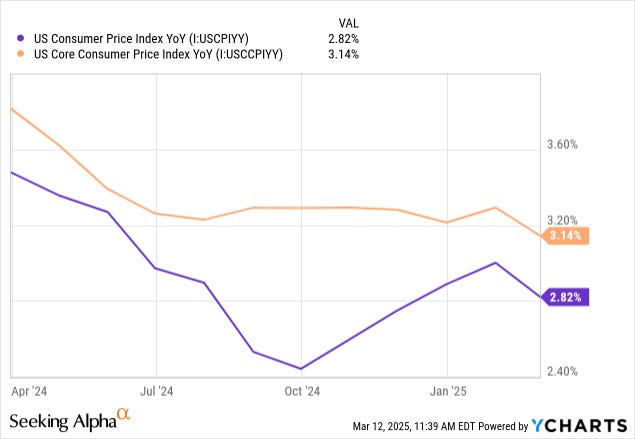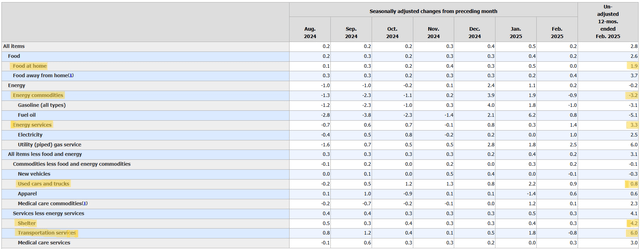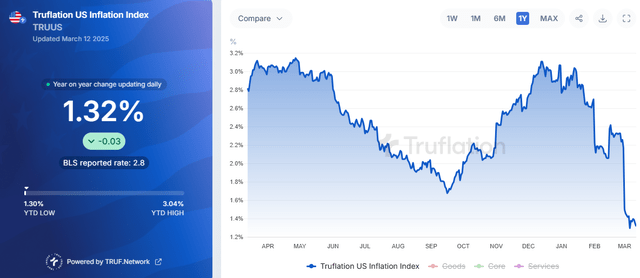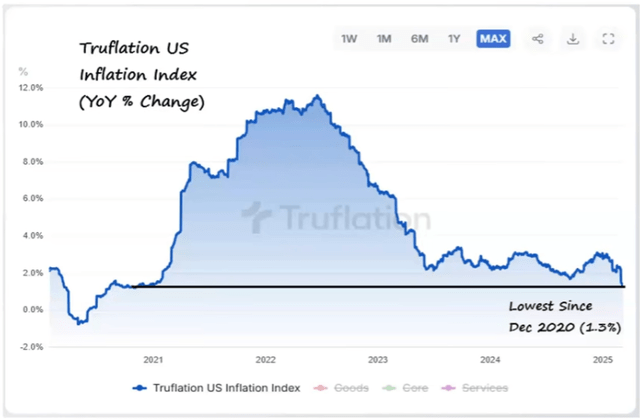MARKET UPDATE - The Last Pre-Tariffs Inflation Report
Dear Landlords,
I want to extend a warm welcome to all our new members! We recommend that you start by reading our Welcome Letter by clicking here. It explains why we invest in real estate through REITs and how to get started.
As a reminder, our most recent "Portfolio Review" was shared with the members of High Yield Landlord on March 4th, 2025, and you can read it by clicking here.
You can also access our three portfolios via Google Sheets by clicking here.
New members can start researching positions marked as Strong Buy and Buy while taking into account the corresponding risk ratings.
If you have any questions or need assistance, please let us know.
============================
MARKET UPDATE - The Last Pre-Tariffs Inflation Report
The February CPI report delivered some good news to investors as both the headline and core CPI metrics dipped after a multiple-month-pause in the previous disinflationary trend:

This does not surprise us at all. As we explained in our January CPI report last month:
[T]he biggest reasons why consumer inflation measurements continue running above the Fed's 2% target are (1) the way shelter/housing is calculated, (2) a temporary spike in used car prices due to the destructive wildfires in Southern California, and (3) rising egg prices due to avian flu.
None of these represent secular inflationary trends. None of them signify that inflation is making a sustained rebound, despite how it may appear...
The reasons for the inflationary rebound in the Winter months of 2024 and into January 2025 were temporary in nature. Thus, the CPI was bound to resume its disinflationary decline at some point in the near future.
It turns out that the topline disinflationary decline resumed in February.
Here's a breakdown of February's CPI report (click on the image to enlarge it on your screen):
Virtually across the board, the items showing inflationary pressures in January cooled down in February.
Shelter inflation continues to slowly decline, lower gasoline prices are providing consumers some relief, used car inflation is cooling as the impact of natural disasters fades, and the rate of increase in car insurance has resumed its longstanding disinflationary trend.
Moreover, there are some strong indications that real-time inflation continues to fall.
Truflation shows that year-over-year consumer inflation collapsed to a mere 1.3% going into March:
This is a striking plunge in consumer prices, if accurate.
Could Truflation's data be manipulated for political reasons? No, we don't think so. It was founded by a European company and uses blockchain technology to calculate the metric based on millions of real-time pricing data points from millions of different sources.
Rather, we think this is the next phase of a multi-year trend of structurally falling inflation.
According to Truflation, US inflation has been basically rangebound from mid-2023 to early 2025 after the massive inflationary surge in 2021 and 2022.
Historically, Truflation has been directionally correlated to the CPI, even though the two typically have a gap between their metrics. Truflation tends to lead the CPI by about 45 days.
If Truflation proves prescient this time as it has in the past, then the CPI should continue to drop in March, April, and May.
And if inflation drops more than expected, then the Fed will cut the Fed Funds Rate more times than currently anticipated this year.
But what about tariffs? We will address that in the next section below. Afterward, we'll dig into the most notable components and sub-components of the February CPI.
The Last Pre-Tariff CPI Report
Keep reading with a 7-day free trial
Subscribe to High Yield Landlord to keep reading this post and get 7 days of free access to the full post archives.









